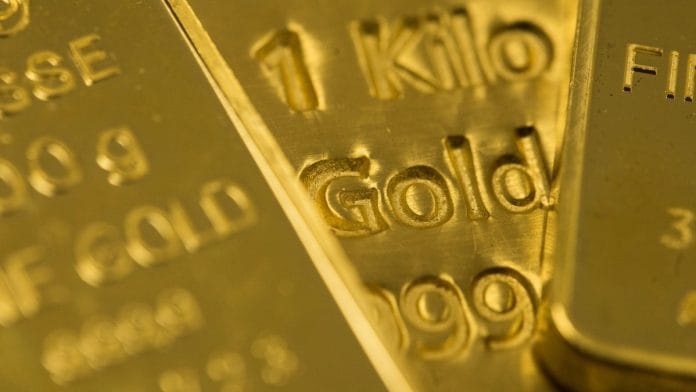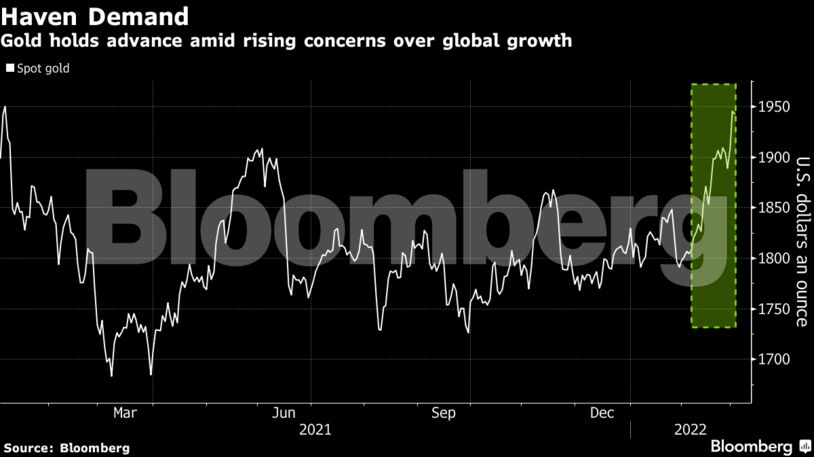Singapore: Gold declined — but remained near a 13-month high — on fears that Russia’s invasion of Ukraine could turn more brutal, aiding demand for haven assets as investors weigh the potential fallout and sanctions.
Bullion dipped after jumping almost 2% in the previous session. It rose by the most since May last year amid mounting concern that the raft of penalties against Russia could dim the outlook for global growth and further stoke inflation. Holdings in exchange-traded funds backed by the metal have risen for two straight months. The small downward move on Wednesday is likely a technical pullback, said Margaret Yang, a strategist at DailyFX.
Officials from the U.S. and allied nations expect more indiscriminate tactics as Russian forces seek to suppress resistance in Ukraine. Vladimir Putin “badly miscalculated” with his invasion of Ukraine, President Joe Biden said in his first State of the Union address on Tuesday, calling the Russian leader a “dictator” and warning that the war will leave his country weaker.
Threats to supplies of grain, energy and metals are adding to price pressures, with a Bloomberg index of commodities jumping the most since 2009 to a record high. Traders are now dialing down rate-hike bets, including pricing out any risk of a half-point March liftoff by the Federal Reserve. Chair Jerome Powell is due to speak before Congress later on Wednesday.
“With the recent geopolitical incursions, I expect there to be support for gold at these levels,” said David Chao, a global market strategist for Asia Pacific ex-Japan at Invesco. Bullion could “experience upwards momentum as long as the war continues, which could be a while,” he said.
Spot gold retreated 0.5% to $1,935.58 an ounce at 11:36 a.m. Singapore time after rising 1.9% on Tuesday and 6.2% in February. Palladium added 0.4% after closing up 3.9% on Tuesday on concerns over potential supply disruptions. Russia produces about 40% of the palladium mined globally. Silver dropped, while platinum was little changed. –Bloomberg
Also read: Russian ruble’s history of catastrophic crashes — from 1998 collapse to current sanctions







